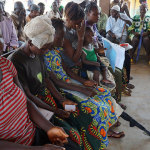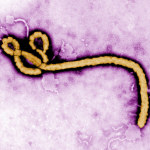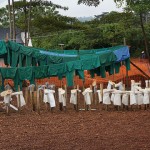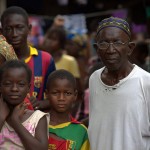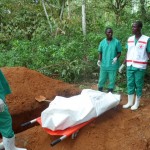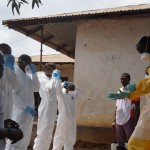Some attention has been paid to the alleged role of funerals in spreading Ebola Virus Disease in Upper West Africa. This has led to attempts to control funerals, causing both distress and active resistance. Critical examination of the role of the funeral event as a mechanism of Ebola transmission seems in order. In this paper, it is argued that funerals are inseparable from care for the sick, as far as Ebola transmission is concerned. The focal issue then becomes not control of funerals but reduction
Continue reading →
This brief summarises some key considerations about food insecurity, the migration of men and youth for work and the implication these movements may have for the Ebola response. The details have been collated from suggestions and insights provided by networks of anthropologists* who work Liberia, Sierra Leone and Guinea (both in-‐country and remotely). These are general considerations that are broadly relevant to the movement of people during the dry season, but further investigation into local specificities is required. The French version of the report is
Continue reading →
Funeral practices in Freetown are varied with differences between typical Muslim and Christian practices. Muslims typically bury the body the same day, or the day after, the death, whereas Christians might wait for up to several weeks while arrangements are made. Muslims normally bury bodies in a shroud, whereas Christians use a coffin. The bodies are typically prepared for burial (washed) by family members. This background paper gives more information on care and burial practices in Urban Sierra Leone.
While this briefing note identifies arenas of particular significance with regard to burial practices, such practices are not standardised, are likely to change as social responses to Ebola evolve, and therefore need to be discussed on a locality by locality basis. Key points are given in this policy brief, followed by a more substantial discussion of burial and cultural practices that increase risk of EVD transmission.
Burials in times of Ebola or Marburg outbreaks have to follow strict biosafety rules to avoid transmission of Ebola/Marburg virus. At the same time, they should be acceptable to families and communities to avoid resistance against disease control. This document deals predominantly with acceptability issues.
The aim of this briefing paper is to consider the various ways in which widely reported fear and resistance to the Ebola response can be understood, and what each way of understanding offers to those battling with the current epidemic. As far as this paper is concerned, there is no single ‘right way’ to comprehend resistance to educators, medics and burial teams, as this is a very complex social phenomenon. The aim instead is to outline the variety of ways in which resistance can be
Continue reading →
Over two thirds of all human infectious diseases have their origins in animals. The rate at which these zoonotic diseases have appeared in people has increased over the past 40 years, with at least 43 newly identified outbreaks since 2004. In 2012, outbreaks included Ebola in Uganda, yellow fever in the Democratic Republic of Congo and Rift Valley fever (RVF) in Mauritania. Zoonotic diseases have a huge impact – and a disproportionate one on the poorest people in the poorest countries. In low-income countries, 20%
Continue reading →
